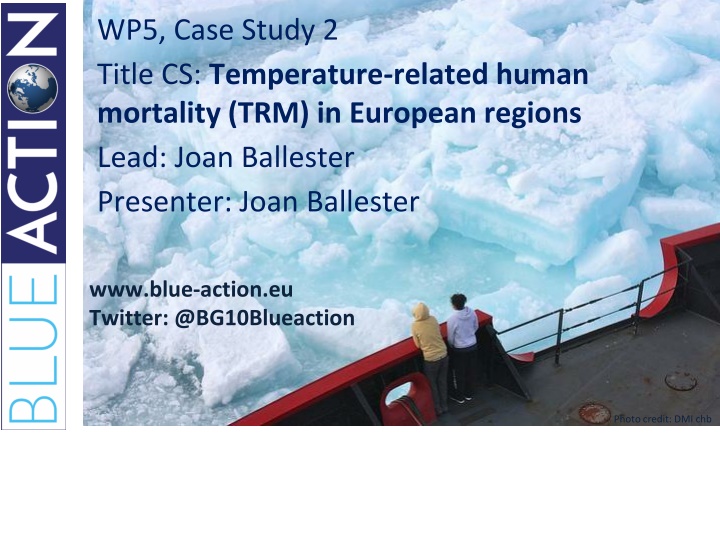
Temperature-related Human Mortality in European Regions: Impacts and Adaptation
Explore the research on temperature-related human mortality in European regions, focusing on the development of a pan-European heat-health early warning system. Discover the impacts on various sectors and the gaps in research related to climate change adaptation and societal inequalities.
Download Presentation

Please find below an Image/Link to download the presentation.
The content on the website is provided AS IS for your information and personal use only. It may not be sold, licensed, or shared on other websites without obtaining consent from the author. If you encounter any issues during the download, it is possible that the publisher has removed the file from their server.
You are allowed to download the files provided on this website for personal or commercial use, subject to the condition that they are used lawfully. All files are the property of their respective owners.
The content on the website is provided AS IS for your information and personal use only. It may not be sold, licensed, or shared on other websites without obtaining consent from the author.
E N D
Presentation Transcript
WP5, Case Study 2 Title CS: Temperature-related human mortality (TRM) in European regions Lead: Joan Ballester Presenter: Joan Ballester www.blue-action.eu Twitter: @BG10Blueaction Photo credit: DMI chb
Main Results Achieved Method based on Distributed Lag Nonlinear Models (DLNM) calibration and validation of the model (147 European regions + Almada) published studies: Nature Communications (twice), Lancet Planetary Health, PLOS Medicine DLNM gives appropriate framework to develop a prototype of pan-European heat-health early warning system: Flexibility to adapt to different climatic regimes Unified and comparable across regions
Main Findings Contribution to the Projects Expected Impacts (EI) This unified and flexible scheme allows to: Account for the specific characteristics of populations in all Europe. Adapt to stakeholder needs, who asked for a Pan- European prediction beyond a few days. Address a knowledge gap never addressed before Acquire new by integrating disciplines Generalize the scheme to other populations if data is available
Main Findings Contribution to the Projects Expected Impacts (EI) Impact on the business sector: Better evaluation of the predictability of the heat-health effects: public health, insurance, farming, sports, Interaction with stakeholders to maximize the impact of the warning system when operational Allow to make informed decisions on: Relevant for public and private sectors International, national and local public health authorities
Gaps in research Inequalities in the adaptation to climate change: Which European societies have already started to adapt to rising temperatures? How can adaptation minimize the impact of global warming on human health? How are atmospheric pollution and macroeconomic recessions affecting the trends in human mortality? How are the differences in socioeconomics modifying the adaptation capacity of societies and social groups? Which is the role of the environmental, socioeconomic and demographic factors? Can we realistically re-estimate the likely range of future environment-related mortality?
Thank you! The Blue-Action project has received funding from the European Union s Horizon 2020 research and innovation programme under grant agreement No 727852 Twitter: @BG10Blueaction Zenodo: https://www.zenodo.org/communi ties/blue-actionh2020 www.blue-action.eu




















